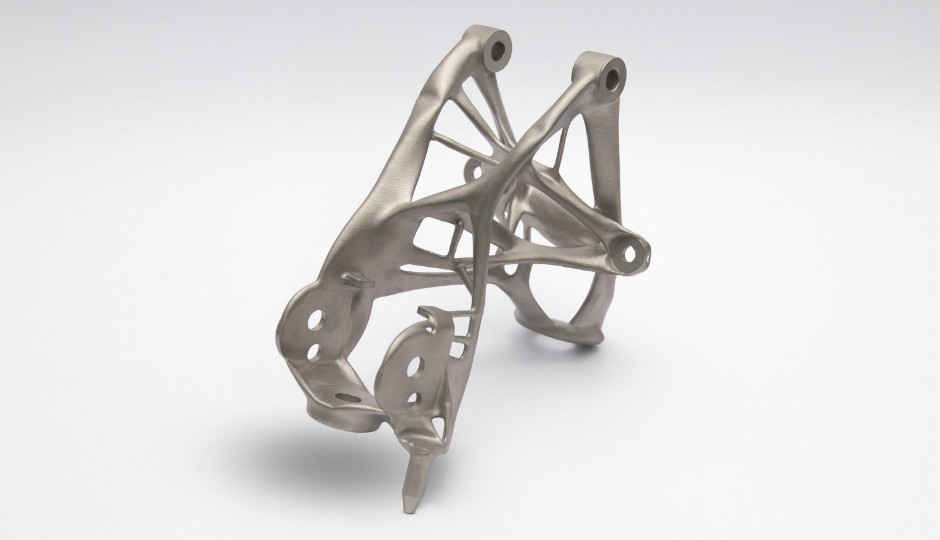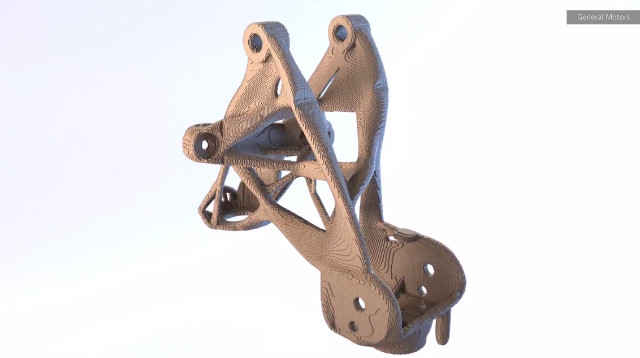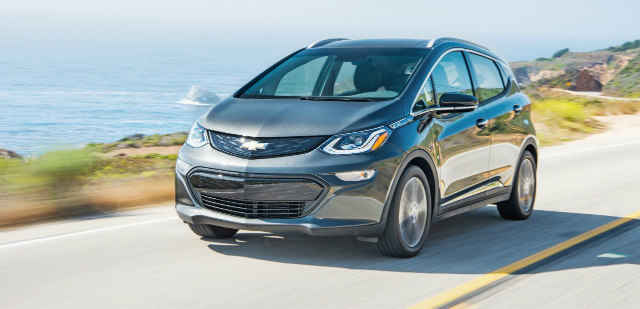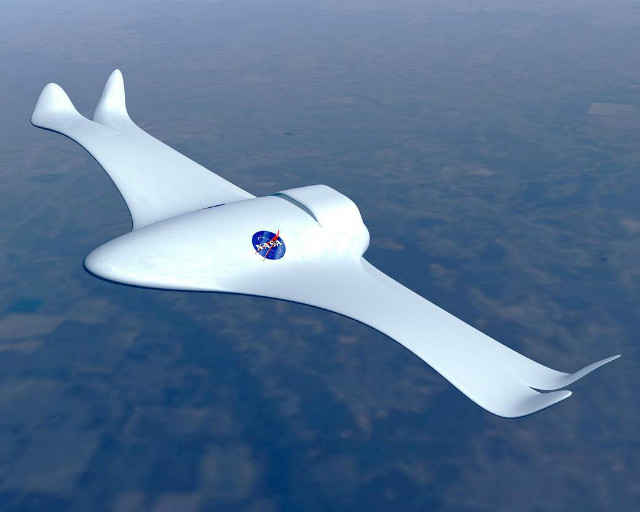3D printing electric car parts: The birth of an industry?
General Motors is eyeing 3D printing as a way to increase efficiency and range in EVs, and this can lead to the complete alteration of how a car is made today.

If you have ever followed the world of motorsport and rallying, you will have seen how cars made for the track are stripped down to the bare minimum, often not featuring elements that we really take for granted usually. Racers often remove elements like additional seats, any stereo/air conditioning, and even strip out regular parts in favour of specialised, lightweight ones. The reason for this is fairly simple – a lighter car is certain to be faster and will offer a longer range with a full tank of fuel.
 Survey
SurveyIt is this principle that General Motors (GM) is applying to everyday cars, in order to streamline production procedures, raise profitability and increase efficiency of cars. In a release talking about the new technology on its website, GM touched upon the usage of industry-grade 3D printing along with advanced software-based design technologies as the latest move in the field of vehicle lightweighting. To do so, it has teamed up with software design giant Autodesk to reach its goal, and in the official statement, says that it “uses cloud computing and AI-based algorithms to rapidly explore multiple permutations of a part design, generating hundreds of high-performance, often organic-looking geometric design options based on goals and parameters set by the user, such as weight, strength, material choice, fabrication method, and more. The user then determines the best part design option.”
3D printing automobile components
3D printing has found widespread application in core professional fields, and researchers across the world are making the full use of the diverse abilities of 3D printing to experiment with objects and components. At the moment, 3D printing is being used by aviation and aeronautics industries to build lightweight parts out of composite material, which are both lighter than conventional material and are specially synthesised to be stronger than what was already available.
Ken Kelzer, VP of GM’s Global Vehicle Components and Subsystems, stated earlier this month, “This disruptive technology provides tremendous advancements in how we can design and develop components for our future vehicles to make them lighter and more efficient. When we pair the design technology with manufacturing advancements such as 3D printing, our approach to vehicle development is completely transformed and is fundamentally different to co-create with the computer in ways we simply couldn’t have imagined before.”
The 3D printed seat bracket
To prove the concept of 3D-printed auto parts, GM an Autodesk built a car seat’s framework, and has stated that while the seat bracket is 40 percent lighter than before, it is also 20 percent stronger. Additionally, while a typical seat bracket is made of multiple different components screwed and stuck together strategically, this 3D-printed seat bracket is just one single part – no joints and edges anywhere. Describing the collaboration, GM has stated, “As part of a multi-year alliance focused on innovation, GM and Autodesk will collaborate on projects involving generative design, additive manufacturing, and materials science. Executives and engineers from the two companies will participate in a series of onsite engagements to exchange ideas, learnings, and expertise. GM also has on-demand access to Autodesk’s full portfolio of software and technical specialists.”
How it improves car manufacturing
The seat bracket is only one example of a car part that can be 3D-printed, and the actual list, once such construction actually begins, can reach a wide range of car components. At present, a particular section of a car is put together with joints and fulcrums, and is also often sourced from multiple vendors. This has multiple issues – sourcing from different vendors mean lesser control over the quality of components, possible lack of uniformity of textures and qualities of parts, and so on.
Once 3D printing comes into fray, automobile manufacturers will have lesser dependency on third party vendors when it comes to component sourcing. This will essentially streamline the process of manufacturing from the logistical point of view. However, that is not the main advantage that 3D printing car parts bring to the game.
EVs like the Bolt may soon feature 3D-printed parts
With us being on the verge of welcoming electric cars, car companies around the world are building new chassis to accommodate the new form of powertrains – batteries. Most companies are building the batteries on to a car’s floor, thereby opening up space elsewhere in the car. However, high density batteries are very heavy, and by principle, a heavier object will require more force or energy to be moved. This leads to higher amount of charge being drawn from the batteries by the electric motors that power these vehicles, which in turn restrict the maximum possible range of electric cars.
One way to resolve this plight, of course, is to build new battery technology that can make batteries last longer. However, even with that, once you do run out of charge, our present generation charging technologies will require too long for such batteries to charge up adequately, making long distance commuting a rather difficult affair. The solution? Make the chassis and its kerb load lighter, and this is where 3D printing car parts come into the picture.
With a lighter body, an electric vehicle can travel significantly longer than with the heavier body. General Motors is focusing on electric and fuel cell vehicles, and both the energy sources are reliant on weight of load. Lighter components, GM believes, will be key to better performance, particularly from EVs. Scott Reese, Senior VP for Manufacturing and Construction Products at Autodesk, stated, “Generative design is the future of manufacturing, and GM is a pioneer in using it to lightweight their future vehicles. Generative technologies fundamentally change how engineering work is done because the manufacturing process is built into design options from the start. GM engineers will be able to explore hundreds of ready-to-be-manufactured, high-performance design options faster than they were able to validate a single design the old way.”
Future aerospace technology is one of the biggest fields for 3D printing
With new forms of composite raw materials being developed for lightweight structures, we now have materials that can provide similar rigidity, tensile strength and textures, or even better what we presently have. These materials, with the help of high precision, industry-grade 3D printers, are being developed into car components that are stronger, yet lighter. The car manufacturing industry is taking a leaf out of the real estate construction industry’s adoption of carbon fibre as the new component of reinforcing strength in pillars and structures. Carbon fibre – a component used frequently in cars as well, is much lighter in nature than conventional iron, steel or other material, and yet presents high tensility and elasticity, with increased coefficient of shock. All of this makes such a material considerably stronger, and when in comes to making cars – safer.
With 3D printing, cars will also have lesser joints and rivets, which in turn leads to lesser anomalies. Having lesser moving parts in a structure increases its overall strength and makes it more durable (take the seat bracket for example), and this will lead to lesser creaks and better overall interior and exterior quality of cars, which will also be key in the build-up to autonomous cars.
The possible future?
3D printing is not strictly new, but its widespread implementation will certainly be a first. With autonomous and electric cars just around the corner, car manufacturers around the world will be looking at superior, alternate modes of making cars that will lead to lighter and stronger vehicles, and with shorter assembly queues. GM has stated that it aims to have 20 electric and fuel cell vehicles in its lineup by 2023 across all of its international markets, and has ambitiously stated that it aims to make its EV business profitable by 2021.
If it is indeed to happen, going with 3D printing components is certainly the first step towards optimising its lineup from the conventional processes.


